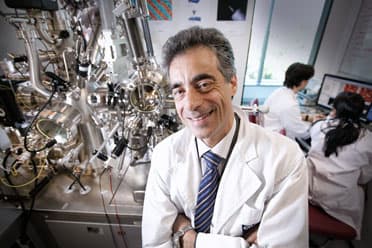Electric Cars To Be Powered By Own Panels Using Supercapacitor Films - QUT Research
If you are curious about the research in the field of electric cars, here's something to truly dazzle your brain. A team of researchers from Queensland University of Technology (QUT) has achieved a breakthrough in nanotechnology that makes it possible for an electric car to be powered using its own body parts/panels. With the help of light weight super-capacitors that the team has developed and the regular batteries in-use today, the electric cars will be able to derive a significant boost in power. The researchers from QUT along with PhD scientists from Rice University in Houston, US built these super-capacitors featuring two all-carbon electrodes with electrolyte in-between them into a thin but strong high-power density film. This film could be integrated within a car's doors, floor, roof, bonnet and other body panels so as to store enough energy that can be used for turbocharging an electric car's battery in a matter of few minutes.
In order to give our future electric cars the much-need boost of extra energy for acceleration, the super-capacitor film are truly one of the best options available, thanks to its properties. The supercapacitors are an ideal complement for the mass storage batteries as they possess a limited amount of charge and are able to deliver high-output in a very short amount of time. If we compare that with a standard batteries, the supercapacitors provide considerably faster rate of acceleration and charging time for the electric cars.

Though we currently use supercapacitors in combination with Li-ion batteries to power electric cars, the focus here is on making the cars entirely powered using supercapacitors located in the electric car's body panels. Once they accomplish that, the electric cars will be able to run up to 500 km on a single recharge (which is equal to a fuel-powered cars & double the limit of electric-powered cars).
The technology isn't limited to use in electric cars. In fact, if used on the rear panels of our smartphones and tablets, they could get charged within seconds. The interesting part is, these supercapacitor panels are being developed using cheap carbon materials and therefore have significant positive impacts on environment as well as financially. This means, once in production they could serve as a game changer for the automobile industry.
The results of this research were published in the Journal of Power Sources and the Nanotechnology journal and the team believe that it could be a reality to have these films installed in the car's panels within next five years. What are your thoughts on that? Share with us in comments below.
Source: #-Link-Snipped-#
In order to give our future electric cars the much-need boost of extra energy for acceleration, the super-capacitor film are truly one of the best options available, thanks to its properties. The supercapacitors are an ideal complement for the mass storage batteries as they possess a limited amount of charge and are able to deliver high-output in a very short amount of time. If we compare that with a standard batteries, the supercapacitors provide considerably faster rate of acceleration and charging time for the electric cars.

Though we currently use supercapacitors in combination with Li-ion batteries to power electric cars, the focus here is on making the cars entirely powered using supercapacitors located in the electric car's body panels. Once they accomplish that, the electric cars will be able to run up to 500 km on a single recharge (which is equal to a fuel-powered cars & double the limit of electric-powered cars).
The technology isn't limited to use in electric cars. In fact, if used on the rear panels of our smartphones and tablets, they could get charged within seconds. The interesting part is, these supercapacitor panels are being developed using cheap carbon materials and therefore have significant positive impacts on environment as well as financially. This means, once in production they could serve as a game changer for the automobile industry.
The results of this research were published in the Journal of Power Sources and the Nanotechnology journal and the team believe that it could be a reality to have these films installed in the car's panels within next five years. What are your thoughts on that? Share with us in comments below.
Source: #-Link-Snipped-#
Replies
-
 Shashank MogheHow do these supercapacitors charge the battery? Is it piezoelectric thingy or solar cells kind of stuff?
Shashank MogheHow do these supercapacitors charge the battery? Is it piezoelectric thingy or solar cells kind of stuff?
You are reading an archived discussion.
Related Posts
Cracku is a mobile test preparation platform developed by a group of IIT-IIM alumni looking to revolutionize the way students prepare for MBA entrance exams. With an aim to give...
A nasty campaign has been circulating on WhatsApp. It says that since 'Whatsapp' is not 'Indian', people should abandon it and use 'Telegram' which is 'Indian'. I ignored the message...
I actually want to extract one audio file from a video file and then convert that audio file into text in further stage after which that text would be saved...
Is there a way to add more than 50 members to whatsapp group? A lot of casual visitors to CrazyEngineers use contact us form to ask this question to us...
How do you take a great shot when there's no one around to take a photo of yours? Say hello to Stand-Pod; a very tiny stand for your phone that...
